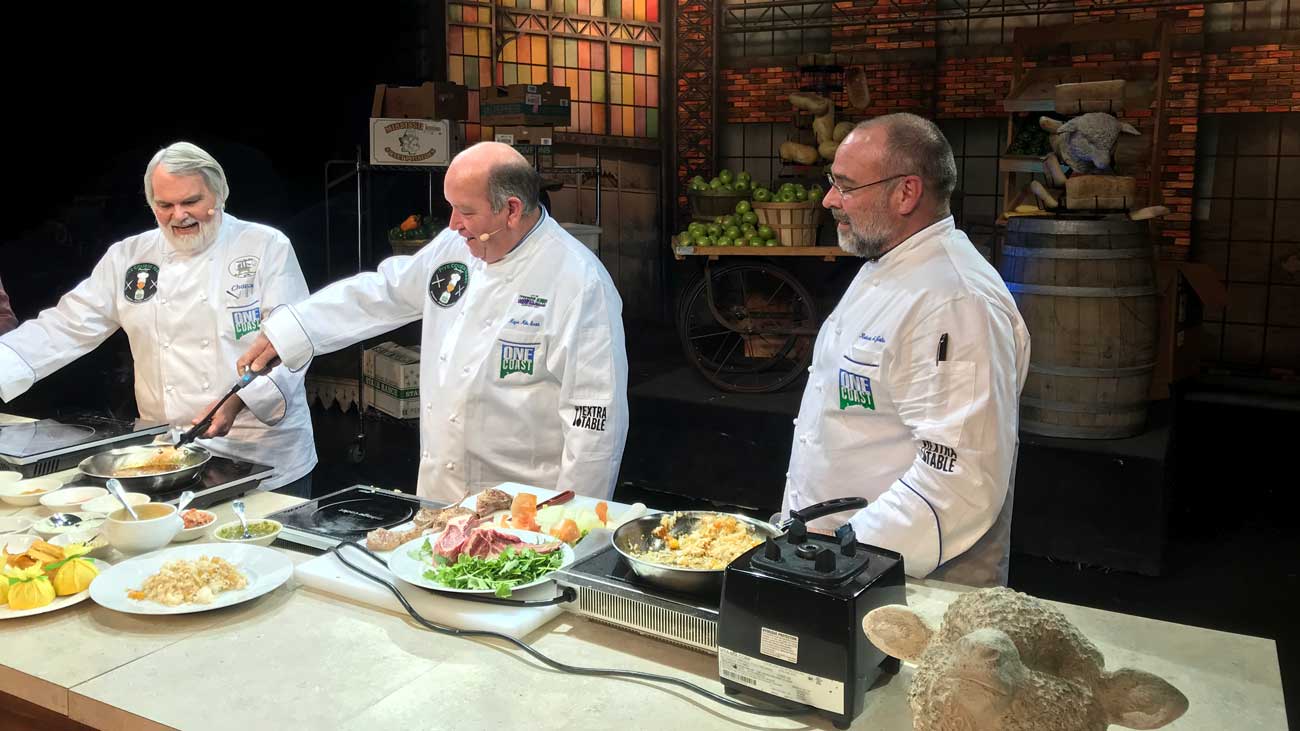My wife and I were dining with friends and the conversation— as it often does in my world— turned to “restaurants.” The discussion was spirited. Everyone was naming favorites and giving opinions on them. Someone mentioned one particular restaurant, and the rapid-fire banter came to a halt. The table fell silent. No one knew exactly how to describe that particular restaurant concept. The group struggled to communicate how they felt about it. Finally I said, “That restaurant just doesn’t have any ‘soul.’”
The other guests paused for a beat, and then they all agreed. They “got it.” The conversation picked back up and we moved to the next restaurant and then the next topic.
Some might not understand attaching a human— actually spiritual— quality to a business such as a restaurant, but my friends obviously “get it,” and I certainly think that way too.
I believe restaurants have souls. Not in the literal sense, obviously, but they each take on a personality and unique qualities specific to that individual location. Some restaurants take on the personality of their owner, some take on the collective personality of their staff. Still others take on the personality of their customers.
This mainly works with local, independent restaurants. It’s hard to have a unique identity, personality, and soul if there are 200 just-alike units that are spread across 32 states. Corporate chains typically have a universal theme and décor that is replicated from city to city. Some corporate chain units might try to blend in locally, but in the end; it’s the same restaurant you would visit if you pulled off of the interstate in Peoria, Ill. or Ocala, Fla.
If you can sit in one restaurant in one city, and then be blindfolded and transported to another restaurant in that chain 13 states away— and you can’t tell the difference, or what city you are in— then that restaurant has no soul.
The soul, personality, and feel of a restaurant must be organic. It cannot be contrived. That’s not to say that a restaurant that worked hard to develop a theme and specific atmosphere can’t be a legitimate restaurant, it can. Though it might not have any soul.
In 1987, during my last stint working in a restaurant outside of my own, I worked at a small restaurant/bar in Destin, Fla. Harbor Docks opened in 1979 in a small building that formerly housed a vacation home overlooking the harbor in the sleepy fishing village of old Destin. Charles Morgan and a couple of friends opened it while they were in their early 20s. They were a strange and loose collection of fish heads and surfers. They shucked oysters and served fish sandwiches and beer. That restaurant concept had soul and personality from the start. It was one of those rare and unique concept trifectas that— in a purely organic way— took on the personality of its staff, its owner, and the neighborhood it was located in. That, my friends, is restaurant soul. That is why Harbor Docks still stands today despite unprecedented growth of the trade area and an onslaught of competition. It’s real.
Leatha’s BBQ Inn in Hattiesburg opened in the 1970s in Foxworth, Miss. It was a true bbq shack with raw plywood floors and ceilings and beach towels on the windows for curtains. It opened with the personality of its owner and namesake, Leatha Jackson. It soon took on the personality of its staff— all members of Leatha’s immediate family— and a true legend of a restaurant was born. It still stands today. It’s real.
The Mayflower in downtown Jackson, Miss. Opened in 1935 and has been serving fish, steaks, seafood, and plate lunches ever since. For those not willing to do the math, that’s 82 years, an amazing feat in the cutthroat and highly competitive restaurant business. The Mayflower has soul in spades, but has taken on the personality of its locale. To me, nothing “feels” more like downtown Jackson than The Mayflower. It’s real.
One can open up a new restaurant, hang old posters, and line the walls and shelves with bric-a-brac. But if the owner or staff doesn’t have “natural” personality, or the location is a corporate wasteland of seed-packet retail* the it will be soulless.
It has to be real and it has to be local. More than anything else— except state and national monuments— local restaurants and bars define a city or town. They tell the story of that town and its people. When they are “real” and have grown organically, they “feel” like the town, city, or neighborhood in which they are located.
Make your town a better place to live. Eat local. Drink local. Promote soul and foster personality
*I define seed-packet retail as an area in which it appears that a plane has flown over and dropped packets of national-chain retail store seeds. A collective group of national-chain retail stores pop up. It’s the same grouping of national chains that one finds at most interstate exits in most towns.
RSJ’s Chicken Jambalaya
2 lbs andouille sausage, or any mild smoked pork sausage, sliced about 1/4 inch thick
3 lbs chicken thigh meat, boneless and skinless, cut into 1 1/2 inch pieces
1 TBL Creole seasoning
2 cups yellow onion, medium dice
1 1/2 cups celery, medium dice
1 1/2 cup green bell pepper, medium dice
2 TBL fresh garlic, minced
1 tsp dry thyme
3 bay leaves
1 pound long grain rice
1 – 14 ounce can diced tomatoes
1 TBL Worcestershire sauce
1 TBL hot sauce
1 quart + 1 cup chicken broth, heated
1 Tbl kosher salt
Heat a large heavy duty cast iron skillet or dutch oven (2-gallon capacity) on high heat.
Place the sausage in the hot skillet and brown it evenly. Stir often to prevent burning. When the sausage is browned, carefully remove the excess fat (reserving enough to cook the chicken). Season the chicken with the Creole seasoning and add it to the skillet. Brown the chicken evenly and cook it for 20 minutes.
Add in the onion, celery and bell pepper and lower the heat to medium. Cook for 10 minutes, stirring often. Add in the garlic, thyme and bay leaves and cook for 5 more minutes. Stir in the rice and cook until the rice grains and hot. Add in the canned tomatoes, Worcestershire sauce, hot sauce and chicken broth. Stir the mixture well to prevent the rice from clumping together.
Lower the heat until the Jambalaya is just barely simmering and cover. Cook for 30 minutes.
Yield: 12-14 servings



